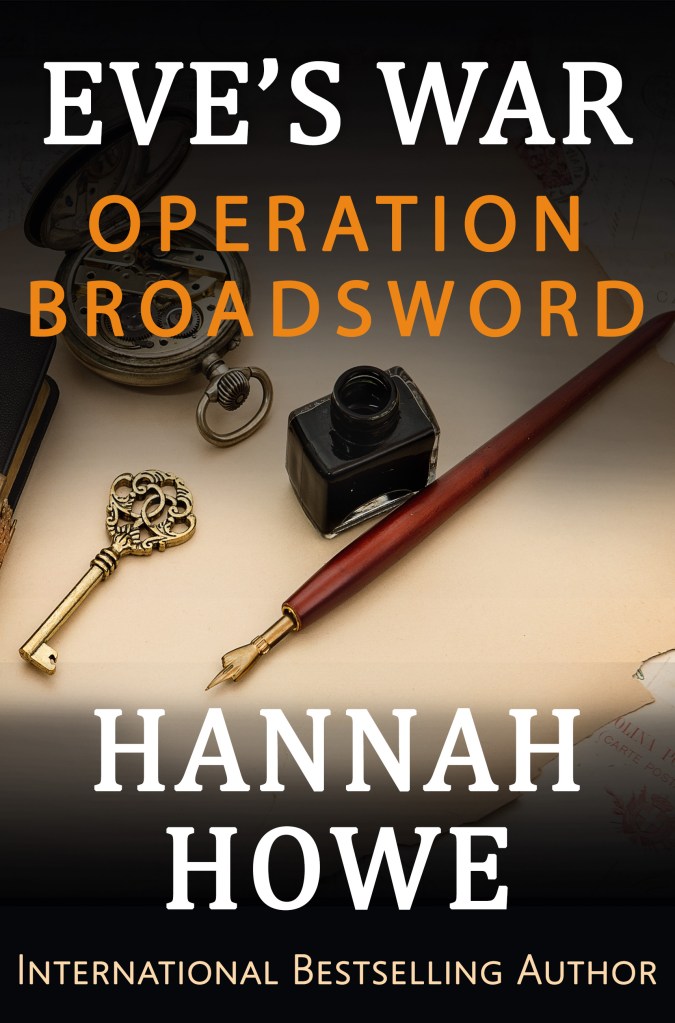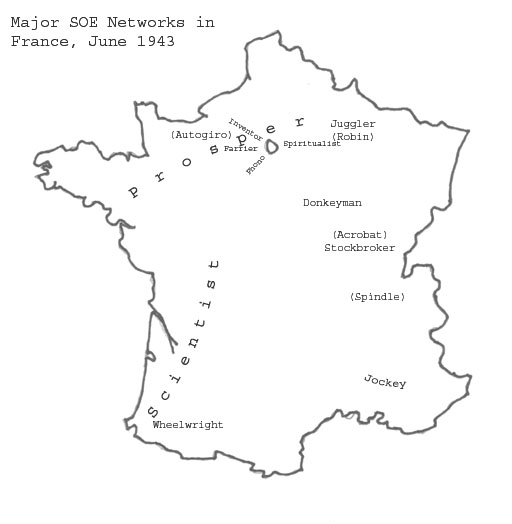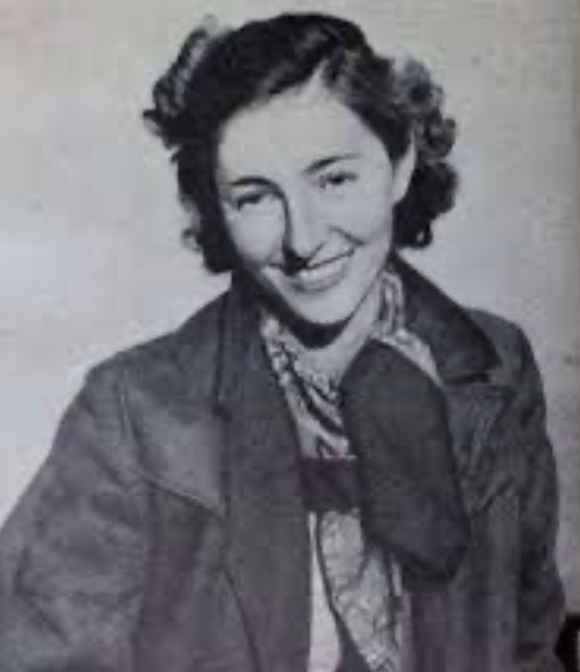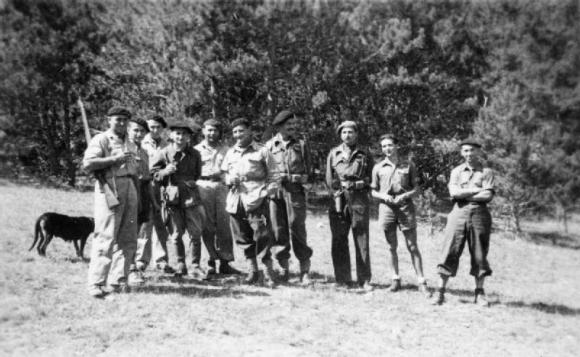Dear Reader,

Operation Broadsword, book three in my Eve’s War Heroines of SOE Series, is now available to pre-order 🙂

https://books2read.com/u/bxn5e6
🎼🎼🎼 Blue eyes, baby’s got blue eyes…🎼🎼🎼

Packed with shorts stories, articles, puzzles, recipes and so much more, the latest issue of Mom’s Favorite Reads.
Images from my garden this week.
My article about SOE heroine Anne-Marie Walters appears on page 20 of the magazine.
I’m enjoying Paula’s narration of Operation Locksmith, book two in my Eve’s War Heroines of SOE Series. Normally, I don’t like listening to my own words, but it’s great fun to be a part of this production.

Nazi board game from 1941 – Wir fahren gegen England (We go against England).
“Fun for all the family.”

Normandy, 1944. While the battle rages, a Frenchwoman pours a drink for a British soldier.

We have more sheep than people 🙂

Walking through the clouds on Pen-y-Fan this week.
Basically, my approach to writing.
Hannah Arendt on Writing:
Gaus: Do you write easily? Do you formulate ideas easily?
Arendt: Sometimes I do; sometimes I don’t. But in general I can tell you that I never write until I can, so to speak, take dictation from myself…Usually I write it all down only once.

The organisational aspect of D-Day never ceases to amaze me.
2 August 1944. The French 2nd Armored Division arrived in France, landing at Utah Beach, Normandy. The division served under General Patton as part of the US Third Army.
Two weeks later, they helped to liberate Paris.


I’m really getting into my character Eve in my Eve’s War series, so much so that when she met a Maquis leader today and they shared cheese as a peace offering it gave me a strong urge to eat cheese. Tomorrow, Eve blows up a railway line. I hope I don’t get a strong urge to play with dynamite 🤣

On this date, with the First World War ten days old, George Bernard Shaw wrote an article urging both sides to shoot their officers and go home.

An inspiration for Guy Samson in my Eve’s War Heroines of SOE series, Francis Charles Albert Cammaerts was born in London on 16 June 1916. Under the code name Roger he was an agent of the Special Operations Executive. His parents were Professor Emile Cammaerts, a Belgian poet, and Tita Brand, a successful actress.

At the beginning of the Second World War, Cammaerts declared himself a conscientious objector. However, in October 1942 he joined the SOE and between March 1943 and September 1944 he led the Jockey network in southeastern France. Considered during training as more intellectual than practical he, nevertheless, completed the course with distinction.
Cammaerts became a pacifist in the 1930s while studying at Cambridge. After university, he established a teaching career where he met fellow teacher and pacifist Harry Rée. After much soul searching, Harry decided to join the SOE. This decision, along with the death of his brother, Pieter, who served in the RAF, convinced Cammaerts that he too should place his pasifist beliefs to one side and join the SOE.
Regarded as one of the finest male agents, Cammaerts recruited locals to the Resistance networks, supplying them with arms and training. He completed two tours as an SOE agent, totalling fifteen months, a period far longer than the average time served by an agent in France. He never stayed in the same house for more than three or four nights. Furthermore, he avoided hotels as their registers were checked by the Gestapo and French police, stayed clear of large railway stations and never told anyone of his plans.
In the Jockey network, Cammaerts linked up with wireless operator Auguste Fioras. On 27 May 1943, the pair sent their first message to SOE headquarters in London while Fioras went on to transmit 416 wireless messages during 1943 and 1944, a record for an SOE wireless operator.

Cammaerts’ Jockey circuit, which had developed to include over 10,000 people, played a crucial role in the action that followed the D-Day landings. His men and women cut communication and railway lines, which severely hindered the movements of Nazi troops and armaments.
Aware of the risks the locals were taking, Cammaerts always informed them that he was an SOE agent and reminded them of the consequences should anyone talk or be caught. Despite this, he always received a warm welcome. Later, along with many other agents, he gave a great deal of credit to the ordinary French citizens who provided him and his colleagues with safety and support. In the television series Secret Agent, broadcast in 2000, Cammaerts said, “The most important element was the French housewife who fed us, clothed us and kept us cheerful.”
At 193 cm tall and with feet so large his nickname in France was “Big Feet”, Cammaerts feared that he would attract the Gestapo’s attention. Furthermore, he spoke French with a noticeable Belgian accent, which made him vulnerable to informers in the Malice. His security fears were realised on 13 August 1944 when he was arrested at a roadblock by the Gestapo. He was taken to Digne prison where he was beaten and interrogated. During the interrogation, he insisted that he was involved in the black market, a cover story he concocted to account for the large sum of money he carried about his person.
Even though Cammaerts was the most important SOE agent in southeastern France, the Gestapo didn’t realise that they had captured him. Nevertheless, they suspected that he belonged to the Resistance and arranged his execution.

However, on 17 August 1944, two days before the Allied invasion of southern France, fellow agent and courier Christine Granville (aka Krystyna Skarbek) helped him to escape. Christine confronted two collaborators, Albert Schenck, a French liaison officer to the Gestapo, and Max Waem, a Belgian interpreter for the Gestapo. She told them that the Allied troops would arrive within hours and that if they did not cooperate they would be condemned as Nazi collaborators. Under threat from the avenging locals, Schenck and Waem secured Cammaerts’ release.

In March 1945, Cammaerts joined the Special Allied Airborne Reconnaissance Force. The SAARF’s main objective was to assist in the reconstruction work in Germany after the fall of Hitler. For Cammaerts this meant dealing with the aftermath of the newly liberated concentration camps. Understandably, he was appalled by what he saw and later said, “The SAARF period was blank and grey and one of those certain areas in my life when I didn’t know what I was doing.”
During his pacifist period, Cammaerts met Nancy Findlay (Nan), and they married on 15 March 1941. Over the following decades, the couple had four children, three girls and a boy.
In 1948, Cammaerts became the first Director of the Central Bureau for Educational Visits and Exchanges, a UNESCO agency. Four years later, he returned to teaching. He was the subject of This Is Your Life in 1958 and in 1959 appeared for the defence in the notorious Lady Chatterley’s Lover trial, a case won by the publisher, Penguin Books, and the author, D.H. Lawrence.
Further teaching posts in Britain and Africa followed. Throughout his career, Cammaerts won high praise as an innovative educator. He finally retired in 1987 to live in the south of France. He died there in 2006.
As ever, thank you for your interest and support.
Hannah xxx



















3 replies on “Dear Reader #61”
Great reading, as always, Hannah! The photos are amazing.
LikeLike
Another fantastic read – so informative and that’s not even mentioning the superb pictures.
LikeLike
Reblogged this on Grant Leishman – Author.
LikeLike